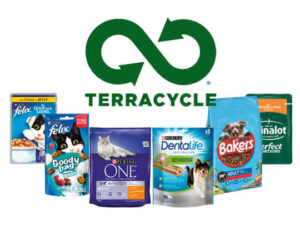In today’s rapidly evolving pet industry, the power of partnerships cannot be overstated. Whether it’s pooling resources, sharing knowledge, or accessing new markets, mergers and collaborations have become strategic imperatives for businesses looking to thrive in a competitive landscape. This article delves into the world of mergers and collaborations, highlighting their potential benefits, distinct differences, and success stories from the pet industry.
Why Consider Collaboration?
In the dynamic landscape of the pet industry, collaboration emerges as a powerful tool, acting as the linchpin for growth, innovation, and resilience. As markets become more saturated and consumer preferences evolve, businesses can no longer rely solely on traditional models of operation. Collaborative ventures breathe fresh air into the industry, offering a fusion of skills, resources, and perspectives. They enable businesses to rise above challenges, harness new opportunities, and ultimately deliver enhanced value to their customers. Delving into collaboration’s strategic underpinnings reveals not just its tangible advantages, but also its potential to redefine the way businesses think, operate, and engage in the pet ecosystem.

Pooling Expertise and Resources
Certainly, pooling expertise and resources is one of the most tangible benefits of collaboration. By sharing knowledge, skills, and assets, businesses can overcome limitations and achieve objectives that might have been out of reach individually. Here are three real-life examples from the pet industry:

Nestlé Purina and TerraCycle
Nestlé Purina PetCare, a leading pet food manufacturer, collaborated with TerraCycle, a recycling company, to tackle pet food packaging waste. TerraCycle is renowned for its ability to recycle hard-to-process materials.
- Outcome: Through this partnership, Purina could offer recycling solutions for its pet food packaging, reducing its environmental footprint and providing an eco-friendly option for its consumers.

Chewy and GreaterGood.org
Chewy, a massive online pet retailer, collaborated with GreaterGood.org, a charitable organization, to donate pet food and supplies to shelters in need.
- Outcome: Their combined efforts have resulted in significant donations to animal shelters across the U.S., leveraging Chewy’s vast supply chain and GreaterGood.org’s network of nonprofits.

Petco and JustFoodForDogs
Petco, a prominent pet supplies retailer, partnered with JustFoodForDogs, a company specializing in vet-designed, chef-prepared dog food.
- Outcome: This collaboration allowed Petco to offer freshly prepared pet food in its stores, expanding its product range and tapping into the trend of premium, fresh pet food. JustFoodForDogs benefited by gaining a wider distribution network and increased brand visibility.
These examples underline how collaborations can blend diverse strengths, resulting in synergies that drive innovation, expand reach, and enhance customer value.
Expanding Market Reach
Expanding market reach is often a primary goal for businesses looking to grow. Collaborations can facilitate access to new customer segments, geographies, or even entirely new markets. Here are three real-life examples from the pet industry:
Banfield Pet Hospital and PetSmart
Banfield Pet Hospital, a chain of veterinary clinics, entered into a strategic collaboration with PetSmart, one of the largest pet retail chains. As part of the partnership, Banfield set up its pet hospitals within PetSmart stores across various locations.
- Outcome: This collaboration allowed Banfield to tap into PetSmart’s extensive customer base, offering convenient veterinary services right where pet owners shop for their supplies. Conversely, PetSmart provided an added value to its customers, making its stores a one-stop-shop for pet needs.
Hill’s Science Diet and Amazon
Hill’s Science Diet, a leading premium pet food brand, collaborated with Amazon to expand its online reach. Given the rise of e-commerce and the convenience of home deliveries, this partnership aimed to meet the changing shopping behaviors of pet owners.
- Outcome: By partnering with Amazon, Hill’s was able to significantly boost its online sales and reach consumers who prefer online shopping, ensuring that their products were available at the fingertips of potential customers.
Bayer and Elanco
In a significant move in the animal health sector, Elanco Animal Health acquired Bayer’s animal health business. This wasn’t just a collaboration but a merger that intended to combine the strengths of both companies.
- Outcome: The deal helped Elanco expand its presence in the pet parasiticides market, gaining access to Bayer’s established products and customer base. It also allowed the combined entity to have a more extensive research and development pipeline, ensuring a strong position in the competitive animal health market.
Each of these examples showcases how collaborations and partnerships can significantly extend a company’s reach, enabling it to serve more customers and penetrate deeper into existing markets or even explore new ones.
Innovation and Product Development
Two minds are often better than one. Collaborations can spark creativity, leading to the development of innovative products or services in the pet industry.
Risk Sharing
Entering new markets or launching new products can be risky. Collaborative ventures allow businesses to share these risks, making ambitious projects more feasible.
Mergers vs. Collaborations
While both mergers and collaborations aim to combine the strengths of two entities, they differ in structure, objectives, and levels of integration.
Definition and Structure
- Mergers: This involves two companies uniting to form a single entity. Often, one company acquires the other. The result is a combined organization with shared assets, liabilities, and operations.
- Collaborations: A more flexible arrangement where two businesses cooperate on specific projects or areas without merging their overall operations.
Objective and Scope
- Mergers: Usually aimed at long-term growth, scalability, and market dominance. They entail a broader scope and a more permanent union.
- Collaborations: Typically project-specific with a defined timeframe. For example, a pet food brand collaborating with a celebrity for a limited-edition product line.
Level of Integration
- Mergers: Deep integration at multiple levels—operations, culture, strategy, and brand identity.
- Collaborations: Limited integration focused on the collaborative project’s objectives, retaining individual brand identities.
Success Stories
The pet industry has seen numerous successful mergers and collaborations, testament to the transformative power of strategic partnerships.

Chewy and PetSmart: A Digital-Physical Blend
In 2017, PetSmart, a brick-and-mortar pet retail giant, acquired Chewy, an online pet product retailer, in one of the largest e-commerce deals ever. This merger highlighted the trend of blending online and offline retail experiences in the pet industry.

BarkBox and Target: Expanding Footprints
BarkBox, a subscription service for dog toys and treats, collaborated with Target to feature its products in their stores. This collaboration allowed BarkBox to tap into Target’s vast customer base, while Target enriched its pet product offering.

Wild Earth and VegInvest: Pioneering Vegan Pet Food
Wild Earth, a startup producing vegan dog treats, secured funding and mentorship from VegInvest, an investment firm. This collaboration underscores the growing trend of plant-based pet nutrition and the importance of strategic funding partnerships.
In a world where adaptability and innovation are key, collaborations and mergers offer pet businesses a viable route to navigate challenges and seize opportunities. They represent more than just the union of resources—they embody the spirit of collective growth, resilience, and transformation in the pet industry.
